Podcast: Play in new window | Download
Subscribe: Apple Podcasts | RSS
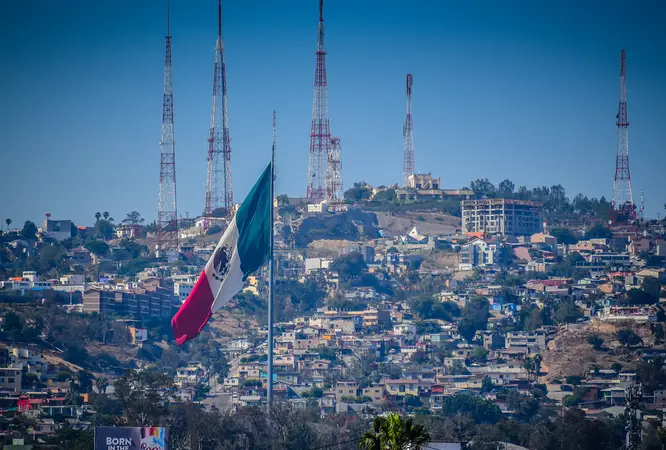 In episode 136 we looked at various UFO sightings in and around the border town of Tijuana, Baja California. Today’s episode covers an event from February 1989 that occurred near Tijuana that has been either overlooked, hushed up, or just lost to history. Hundreds of Tijuana residents reported an object crashing into a hillside, followed by rumors of a rapid military response. Unlike many of the UFO cases profiled on Mexico Unexplained, this incident has remained largely undocumented, with few details preserved in public records. We’ll outline what is known, compare it to other Mexican UFO events, and assess its place in the broader UFO narrative. Here’s the account as it stands.
In episode 136 we looked at various UFO sightings in and around the border town of Tijuana, Baja California. Today’s episode covers an event from February 1989 that occurred near Tijuana that has been either overlooked, hushed up, or just lost to history. Hundreds of Tijuana residents reported an object crashing into a hillside, followed by rumors of a rapid military response. Unlike many of the UFO cases profiled on Mexico Unexplained, this incident has remained largely undocumented, with few details preserved in public records. We’ll outline what is known, compare it to other Mexican UFO events, and assess its place in the broader UFO narrative. Here’s the account as it stands.
In February 1989, near the border city of Tijuana in Baja California, an incident occurred that some locals described as a UFO crash. Specific dates vary in anecdotal reports, with no single day consistently cited, but the event is generally placed mid-month. Witnesses, whose names and numbers are not well-documented, reported seeing a fiery object descending from the sky and striking a hillside on the outskirts of the city. The object was said to have emitted a bright light or flame during its descent, suggesting a rapid, uncontrolled fall. No unanimously described details of its shape or size have surfaced, though some accounts imply it was metallic or disc-like.
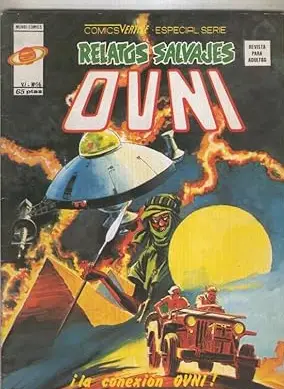 Sifting through the Mexican pulp UFO and paranormal magazines at the time provides little information. One witness, a 55-year-old woman named Luisa Gonzalez Rojas, gave a brief interview to one of these magazines and became one of the only ones on record as someone who was there and saw the crash. According to Gonzalez, the object flew overhead from the west, as if it was coming from the Pacific Ocean. It flew low and seemed to wabble. It was shaped like a classic flying saucer from 1950s science fiction movies with a silver metallic tone. As it got closer to impact it became surrounded by a faint blue light. It hit the side of the hill, and it made a sound like a faraway explosion. Within about 10 minutes helicopters began hovering near the hill. Luisa was too far away to see any insignias or markings on the helicopters and she could not see if forces were mobilized on the ground. In her interview she stated that it all happened very fast and some of her neighbors who were outside like she was also saw the saucer crash, but very few were willing to come forward because they were afraid of either being ridiculed or being detained for questioning by some government agency. When asked what she thought the object could have been, she said – quote – I don’t believe that flying disk came from our world – end quote.
Sifting through the Mexican pulp UFO and paranormal magazines at the time provides little information. One witness, a 55-year-old woman named Luisa Gonzalez Rojas, gave a brief interview to one of these magazines and became one of the only ones on record as someone who was there and saw the crash. According to Gonzalez, the object flew overhead from the west, as if it was coming from the Pacific Ocean. It flew low and seemed to wabble. It was shaped like a classic flying saucer from 1950s science fiction movies with a silver metallic tone. As it got closer to impact it became surrounded by a faint blue light. It hit the side of the hill, and it made a sound like a faraway explosion. Within about 10 minutes helicopters began hovering near the hill. Luisa was too far away to see any insignias or markings on the helicopters and she could not see if forces were mobilized on the ground. In her interview she stated that it all happened very fast and some of her neighbors who were outside like she was also saw the saucer crash, but very few were willing to come forward because they were afraid of either being ridiculed or being detained for questioning by some government agency. When asked what she thought the object could have been, she said – quote – I don’t believe that flying disk came from our world – end quote.
Following the impact of this alleged flying saucer, residents claimed the area was quickly secured by military personnel. It remains unclear whether these were Mexican forces, U.S. troops from across the nearby border, or a joint operation. The site, reportedly a rugged hillside east of Tijuana’s urban center, was said to be cordoned off, with access restricted for an unspecified period. No official statements from the Mexican government or military have been linked to this event, and no physical evidence—such as debris, photographs, or soil samples—has been publicly presented. The story has persisted primarily through oral tradition and brief mentions in UFO literature.
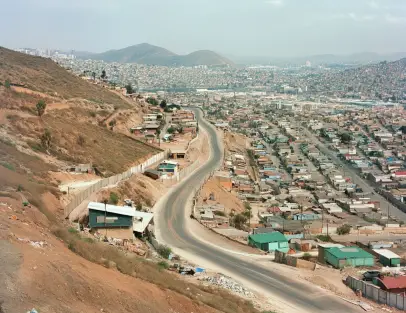 Tijuana in February 1989 was a city of roughly 750,000 people, a bustling border hub adjacent to San Diego, California. Its population had grown rapidly due to industrial expansion and migration, with sprawling neighborhoods pressing against undeveloped hills and canyons. The U.S.-Mexico border, immediately to the north, was heavily monitored during the late Cold War, with military bases like Naval Air Station North Island and Camp Pendleton within a short distance on the American side. This proximity has fueled speculation about cross-border involvement in the incident.
Tijuana in February 1989 was a city of roughly 750,000 people, a bustling border hub adjacent to San Diego, California. Its population had grown rapidly due to industrial expansion and migration, with sprawling neighborhoods pressing against undeveloped hills and canyons. The U.S.-Mexico border, immediately to the north, was heavily monitored during the late Cold War, with military bases like Naval Air Station North Island and Camp Pendleton within a short distance on the American side. This proximity has fueled speculation about cross-border involvement in the incident.
The region’s terrain offered a mix of urban density and isolated pockets, unlike the open deserts of Chihuahua, where the Coyame crash occurred in 1974, detailed in Mexico Unexplained episode number 31, or the rural fields near Puebla in 1967 discussed in Mexico Unexplained episode number 156. Tijuana’s hillside setting contrasts with the flat expanse of the Gulf of Mexico, where pilots recorded objects in 2004 detailed in Mexico Unexplained episode number 67 titled “The Mexican Air Force Versus the Flying Saucers.” Yet this 1989 Tijuana incident’s nearness to a major city echoes the Mexico City eclipse sightings of 1991, though on a smaller scale.
The evidence for the 1989 Tijuana Crash is minimal. Many witnesses described a fiery descent and a subsequent impact, with some noting smoke or a glow at the site. Unlike the Ciudad Juárez incident of 1973, where circular impressions in the earth were reported, no specific physical traces—like burn marks or debris—have been detailed here. The military response is mentioned consistently in anecdotal accounts, but no names, unit designations, or official records have emerged to substantiate it.
This lack of substantiated data sets Tijuana apart from better-documented cases. The Coyame Incident of August 25, 1974, involved radar tracking and a mid-air collision, with claims of wreckage recovery by Mexican and possibly U.S. forces. The Del Rio crash of December 1955 featured Colonel Robert Willingham’s testimony about seeing a downed object. Even the obscure Laredo crash of July 7, 1948, has a U.S. military report to anchor it. Tijuana, by contrast, offers no such foundation, relying on unverified local testimony and sketchy reports found only in the Mexican pulp UFO magazines at the time.
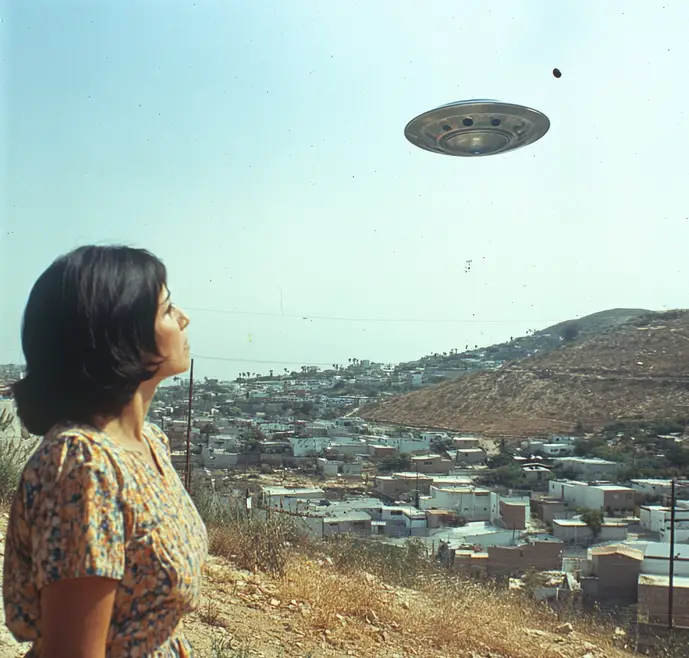 The year 1989 places the Tijuana event in a period of notable UFO activity worldwide. In November, the Belgian UFO wave began, with triangular objects tracked by radar and chased by F-16s. Earlier, in January, the Voronezh, Russia, sighting involved alleged alien landings reported by the Tass news agency. In the U.S., the late 1980s saw renewed interest in UFOs, spurred by books like Communion written by Whitley Strieber in 1987. Mexico itself had no major reported UFO incidents in 1989 beyond Tijuana, though the 1991 Mexico City eclipse event, discussed in Mexico Unexplained episode number 46, would soon follow.
The year 1989 places the Tijuana event in a period of notable UFO activity worldwide. In November, the Belgian UFO wave began, with triangular objects tracked by radar and chased by F-16s. Earlier, in January, the Voronezh, Russia, sighting involved alleged alien landings reported by the Tass news agency. In the U.S., the late 1980s saw renewed interest in UFOs, spurred by books like Communion written by Whitley Strieber in 1987. Mexico itself had no major reported UFO incidents in 1989 beyond Tijuana, though the 1991 Mexico City eclipse event, discussed in Mexico Unexplained episode number 46, would soon follow.
Unlike the 1973 wave tied to Ciudad Juárez, which coincided with U.S. sightings like Pascagoula, Tijuana’s timing aligns with a quieter moment in Mexican UFO history. The Gulf of Mexico case of 2004, with its Air Force footage, came years later, while the Zacatecas event of 1883, detailed in in Mexico Unexplained episode number 46, stands far earlier. Tijuana’s crash thus occupies an isolated spot, lacking the broader wave to amplify it.
Several theories attempt to account for the little-known 1989 Tijuana Crash. One suggests it was an extraterrestrial craft, its fiery descent and military response echoing typical “flying saucer” crash narratives like Coyame or Roswell. Proponents note the border’s proximity, theorizing U.S. interest in securing alien technology. However, no wreckage or alien-related claims have surfaced, unlike the detailed Coyame accounts.
Another possibility is a military mishap, perhaps a U.S. or Mexican aircraft or missile test gone awry. San Diego’s military presence supports this, though no declassified records from 1989 mention such an event crossing the border. The Puebla crash of 1967, with its burn marks, hints at a similar scenario, but Tijuana lacks corroborating traces. A third option is a natural phenomenon, like a meteor, misidentified by witnesses. The fiery descent fits, yet meteors are seldom disc-shaped and metallic, and rarely prompt military cordons, unlike the controlled response claimed in this event.
Skeptics argue it was a hoax or rumor, perhaps inflated by Tijuana’s border-town reputation for intrigue, combined with the Mexican UFO press at the time needing a story to fill up the pages of their publications.
The Tijuana Crash differs from Mexico’s more prominent UFO incidents. How does it compare and contrast? Coyame and Chihuahua, both in 1974, involving crashes with alleged military recovery: Coyame with a plane collision, Chihuahua with radar data. Tijuana’s crash lacks these specifics, its fiery impact more akin to a single-object descent. The Del Rio event of 1955, near the Texas-Mexico border, shares a military witness, but Tijuana has no such figure.
Mexico City’s 1991 sighting was a mass event with video evidence, unlike Tijuana’s localized scope. Puebla’s 1967 crash left physical signs investigated by famous Mexican UFO researcher Jaime Maussan, while Tijuana’s traces remain vague. The Gulf of Mexico incident of 2004, off Campeche, featured recorded objects but no crash, contrasting with Tijuana’s grounded outcome. Laredo’s 1948 case, with its ‘rocket-like’ object, parallels Tijuana’s border setting, yet has a U.S. report that the 1989 Tijuana incident lacks.
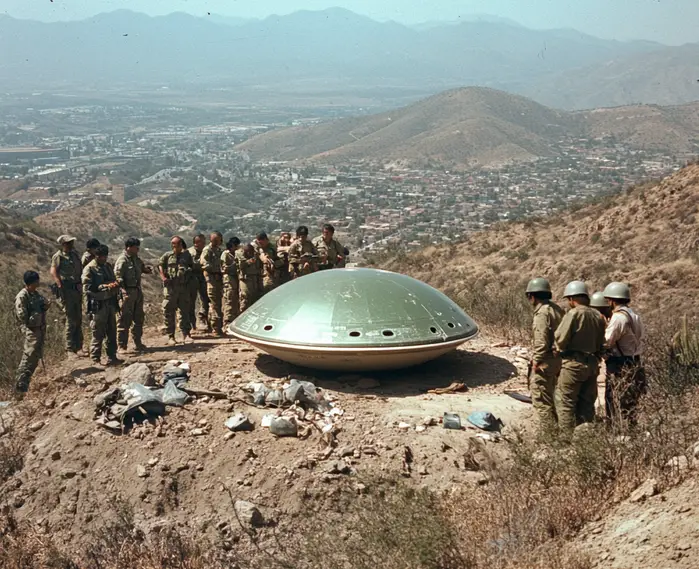 Ciudad Juárez in 1973, which we’ve reexamined, reported a landing, not a crash, with circular impressions in the soil which was less destructive than Tijuana’s impact. The Zacatecas event, though early, was photographed, unlike Tijuana’s undocumented nature. Tijuana stands out for its crash narrative near an urban center, yet its obscurity rivals the UFO event in Juárez.
Ciudad Juárez in 1973, which we’ve reexamined, reported a landing, not a crash, with circular impressions in the soil which was less destructive than Tijuana’s impact. The Zacatecas event, though early, was photographed, unlike Tijuana’s undocumented nature. Tijuana stands out for its crash narrative near an urban center, yet its obscurity rivals the UFO event in Juárez.
The Tijuana Crash’s obscurity may stem from several factors. In 1989, Tijuana’s mainstream press did not widely report it, possibly due to limited coverage or very few eyewitnesses who were willing to come forward and make statements. Some theorize that lack of press coverage at the time has to do with government suppression of the story. Unlike Coyame, featured in later books and articles in the major press, Tijuana has no dedicated study. Its border location might suggest U.S. influence in silencing it, but no evidence supports this.
The lack of a crash’s aftermath—debris, burns, recovered alien bodies, or official acknowledgment—mirrors Ciudad Juárez’s thin record but contrasts with Puebla’s tangible signs. Pre-internet, without a mass sighting like Mexico City’s, the story stayed local, fading as witnesses aged or moved.
More information might exist in untapped sources. Tijuana’s municipal archives or San Diego’s military records from 1989 could hold clues, though access is uncertain. Elderly residents from the hillside areas, now in their 70s or 80s, might recall details if interviewed. Unlike the Gulf case’s Air Force footage, no such record is known here, but minor local newspapers and magazines from February 1989 could yield a forgotten article. The site itself, if identifiable, might retain subtle traces, though the unfettered urban sprawl that has overtaken Tijuana in recent years may have altered this alleged flying saucer crash site.
The Tijuana Crash of February 1989 remains an enigma in Mexico’s UFO history. Its reported fiery descent and military response suggest a significant event, yet its lack of evidence places it below other Mexican UFO cases like Coyame, Puebla, or the Gulf of Mexico. Compared to similar events, the 1989 Tijuana incident offers a crash narrative, but with less to grasp onto. Whether an extraterrestrial incident, a military error, or a misidentified meteor, it underscores a pattern: Mexico’s border regions harbor tales that resist full explanation. What really happened here may never be known.
REFERENCES
Various pulp UFO magazine sources and internet sources.
